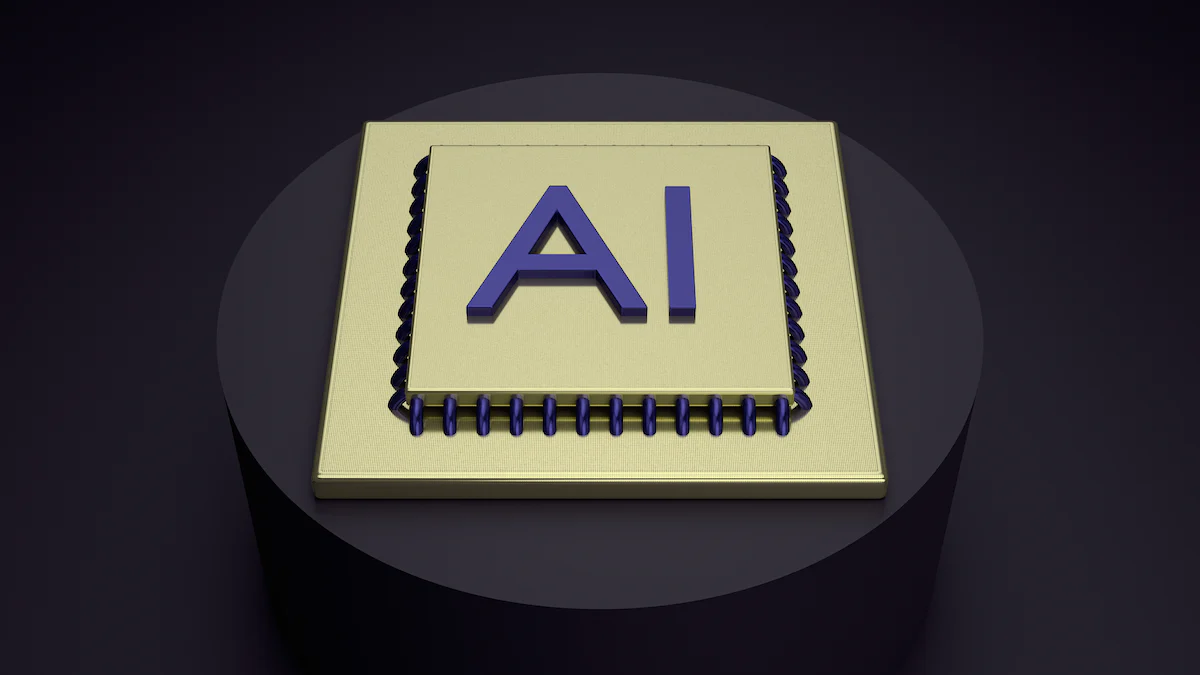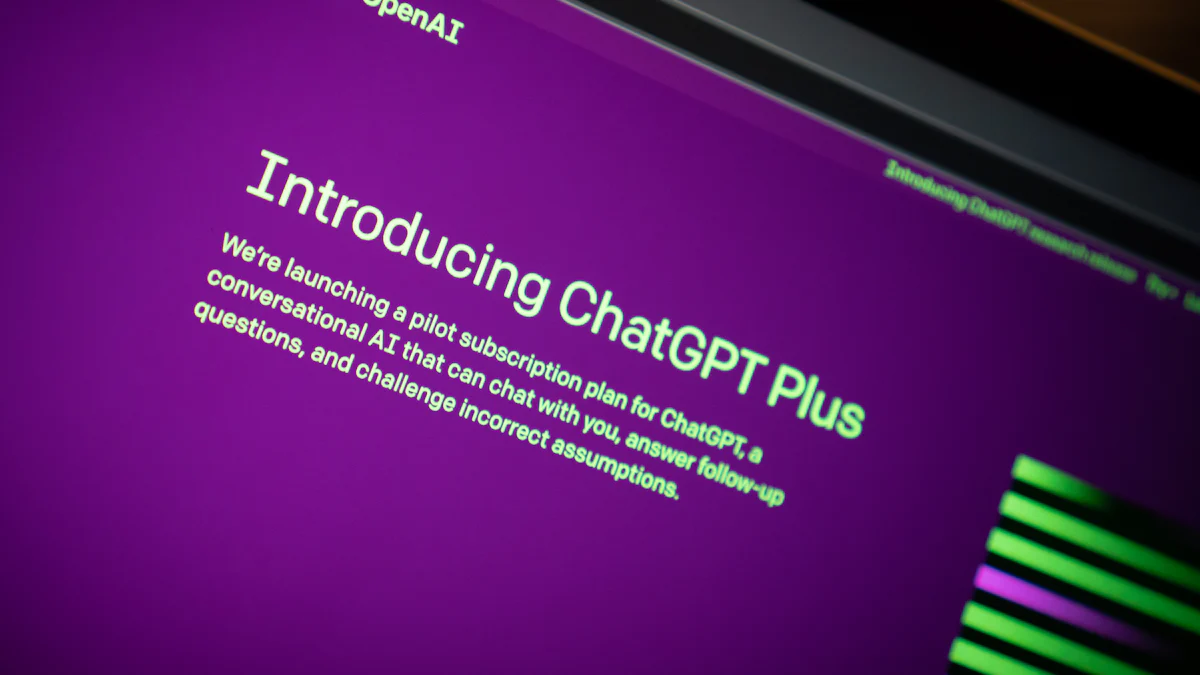
Introduction
Generative AI, with its ability to produce human-like text, has emerged as a powerful technology that is reshaping various industries. As the influence of generative AI expands, it is crucial to understand its impact on the job market and how it may lead to job loss in certain sectors. This ChatBlog post written by ChatGPT delves into the implications of generative AI on employment, identifies the industries that will be most affected, and provides strategies for individuals to prepare for this transformative shift.
The rapid advancement of generative AI has revolutionized the way machines learn and generate content. With models like ChatGPT becoming increasingly sophisticated, there is growing concern about their potential to replace human workers in certain roles. The ability of generative AI to create coherent and contextually relevant text has already been demonstrated in applications such as writing articles, generating code snippets, and even composing music.
Job loss due to the implementation of generative AI systems like ChatGPT is a pressing concern. While these systems can enhance productivity and streamline tasks in many industries, they also have the potential to automate jobs traditionally performed by humans. For instance, customer service representatives who handle routine inquiries through chat or email could be replaced by AI-powered bots that can understand and respond to customer queries effectively. Similarly, content creators who rely on generating written content could face competition from generative AI systems capable of producing high-quality articles at scale.
The impact of generative AI on different sectors will vary based on their susceptibility to automation. Industries that heavily rely on repetitive tasks or data analysis are likely to experience significant disruption. For example, manufacturing assembly lines could see a reduction in manual labor as robots equipped with generative AI take over repetitive tasks. Likewise, financial institutions might adopt automated systems powered by generative AI for tasks such as risk assessment or fraud detection.
To navigate this changing landscape and prepare for the impact of generative AI on jobs, individuals need to adapt their skill sets. The ability to work alongside AI systems and leverage their capabilities will become increasingly valuable. Developing skills that complement generative AI, such as data analysis, critical thinking, and creativity, can help individuals remain relevant in a job market influenced by automation.
It is important to note that the impact of generative AI on jobs will not be immediate nor uniform across all sectors. The timeline for widespread adoption and integration of generative AI systems varies depending on factors such as technological advancements, regulatory frameworks, and societal acceptance. However, it is crucial for professionals, students, researchers, and technology enthusiasts to stay informed about these developments and proactively prepare for the changing landscape.
The Rise of Generative AI
The rise of generative AI has revolutionized the field of artificial intelligence, opening up new possibilities and opportunities. Generative AI refers to a class of machine learning models that have the ability to generate new content, such as text, images, and even music, that closely resemble human-created content. This technology has seen significant advancements in recent years, thanks to breakthroughs in deep learning algorithms and access to large datasets.
One notable advancement in generative AI is the development of language models like ChatGPT. These models are trained on vast amounts of text data and can generate coherent and contextually relevant responses to prompts or questions. ChatGPT, in particular, has gained widespread attention for its ability to engage in meaningful conversations with users.
The potential benefits of generative AI are vast and extend across various industries. In the field of creative arts, for example, generative AI can assist artists by generating novel ideas or even creating art pieces themselves. It can also be used in content creation tasks such as writing articles or producing marketing materials.
Another area where generative AI shows promise is healthcare. Medical professionals can utilize this technology to analyze patient data and generate personalized treatment plans based on individual needs. Additionally, generative AI can aid in drug discovery by simulating molecular structures and predicting their properties.
However, while the rise of generative AI brings numerous opportunities, it also raises concerns about job displacement. As machines become increasingly capable of performing complex tasks traditionally done by humans, there is a genuine fear that certain jobs may become obsolete or significantly reduced in demand.
One prominent example is the impact of ChatGPT on customer service roles. With its ability to handle customer queries effectively, it is conceivable that companies may rely more heavily on chatbots powered by generative AI rather than human agents. This could lead to job losses in call centers or customer support departments.
Moreover, sectors heavily reliant on manual labor or routine tasks are likely to be affected by generative AI. Industries such as manufacturing, transportation, and data entry may experience significant changes as machines take over repetitive tasks, leading to potential job displacement for workers in these sectors.
To prepare for the impact of generative AI on the job market, individuals need to adapt and acquire new skills that are complementary to AI technologies. This could involve upskilling or reskilling in areas such as data analysis, programming, or creative problem-solving. Additionally, developing a strong understanding of AI ethics and responsible AI practices will be crucial in ensuring the ethical deployment of generative AI systems.
Job Loss Due to ChatGPT
Generative AI, specifically ChatGPT, has the potential to significantly impact the job market by leading to job loss in various industries. As this technology continues to advance, it is important to examine the role of ChatGPT in job displacement and understand the specific industries that are most affected.
ChatGPT is an advanced language model developed by OpenAI that can generate human-like text based on given prompts. It has been trained on a vast amount of data from the internet, enabling it to produce coherent and contextually relevant responses. While this technology has shown great promise in enhancing various applications such as customer support and content generation, its widespread adoption also raises concerns about potential job loss.
One industry that is particularly vulnerable to job loss due to ChatGPT is customer service. Traditionally, many companies have relied on human agents to handle customer queries and provide support. However, with the development of sophisticated chatbots powered by generative AI like ChatGPT, these tasks can now be automated more efficiently and at a lower cost. Companies can deploy chatbots that utilize ChatGPT's capabilities to handle routine customer inquiries, reducing the need for a large workforce dedicated solely to customer service.
Another sector that may experience significant job displacement is content creation. With its ability to generate high-quality text, ChatGPT can potentially replace human writers in certain areas such as news reporting or content marketing. This raises concerns for professionals working in these fields who may face competition from AI-generated content that can be produced quickly and at scale.
The implications of job loss due to ChatGPT extend beyond individual workers and impact the overall workforce and economy. While automation has historically led to new jobs being created in different sectors, there is no guarantee that this will hold true with generative AI. The rapid advancement of technology could result in a larger number of jobs becoming obsolete before new opportunities emerge. This could lead to unemployment and income inequality, particularly for individuals who lack the necessary skills to transition into new roles.
To mitigate the potential negative impact of generative AI on jobs, individuals and organizations must proactively prepare. One strategy is to focus on developing skills that are less susceptible to automation. Jobs that require high levels of creativity, critical thinking, and emotional intelligence are likely to be more resilient in the face of AI advancements. By investing in education and training programs that foster these skills, individuals can position themselves for future job opportunities that are less vulnerable to automation.
Furthermore, collaboration between humans and AI can lead to better outcomes. Rather than viewing generative AI as a threat, it can be seen as a tool that complements human capabilities. By leveraging the strengths of both humans and AI, organizations can achieve higher productivity and efficiency while creating new roles that harness the power of generative AI technology.
Sectors Most Impacted by Generative AI
Generative AI has the potential to significantly impact various sectors of the job market. As this technology continues to advance, it is important to identify the industries that will be most affected by generative AI and understand the implications it may have on jobs within these sectors.
One industry that is expected to experience a significant impact is the customer service sector. With the development of ChatGPT and other generative AI models, there is a growing concern that customer service representatives may face job loss as these AI systems become more proficient in handling customer inquiries and providing support. Companies can leverage generative AI to automate responses and streamline their customer service operations, leading to reduced reliance on human agents. While this can improve efficiency and reduce costs for businesses, it also raises questions about the future of employment in this sector.
Another industry that may be heavily impacted by generative AI is content creation and journalism. With the ability of AI models like ChatGPT to generate human-like text, there is a possibility that automated systems could replace certain roles in content creation, such as news article writing or social media posts. This raises concerns about the quality and authenticity of generated content, as well as potential ethical issues surrounding misinformation or biased narratives. However, it is important to note that while generative AI can assist in content generation, human creativity and critical thinking are still essential for producing high-quality and engaging content.
The healthcare industry is also likely to experience significant changes due to generative AI. Medical professionals rely on accurate diagnosis and treatment plans, which could potentially be improved through the use of AI algorithms trained on vast amounts of medical data. Generative AI models have shown promise in assisting doctors with tasks like medical imaging analysis or patient triage. While this can enhance efficiency and accuracy in healthcare delivery, it may also lead to concerns about job displacement for certain roles within healthcare professions.
Additionally, industries such as transportation and logistics may see substantial impacts from generative AI technologies. The development of autonomous vehicles and intelligent routing systems powered by AI has the potential to revolutionize the transportation industry. Self-driving cars and trucks could replace human drivers, leading to significant job loss in this sector. However, new job opportunities may arise in areas such as AI system maintenance, data analysis, and infrastructure development.
The education sector is also expected to be affected by generative AI. AI-powered tutoring systems can provide personalized learning experiences for students, adapting to their individual needs and enhancing educational outcomes. While this can be beneficial in terms of improving access to education and providing tailored support, it may also raise concerns about the role of teachers and potential job displacement within the field.
Strategies for Preparation
In order to navigate the potential impact of generative AI on the job market, it is crucial for individuals to proactively prepare themselves. By equipping themselves with the necessary skills and knowledge, individuals can position themselves to thrive in an evolving job landscape. In this section, we will discuss several strategies for preparation that can help individuals mitigate the potential negative effects of AI on jobs.
One of the key strategies for preparing for the impact of AI on jobs is through upskilling and reskilling. As technology continues to advance at a rapid pace, certain job roles may become obsolete or undergo significant changes. By actively seeking opportunities to learn new skills and adapt to emerging technologies, individuals can enhance their employability and remain competitive in the job market.
Lifelong learning plays a crucial role in preparing for the impact of AI on jobs. With the continuous evolution of technology, it is essential for individuals to embrace a mindset of ongoing learning and development. This includes staying updated with industry trends, attending relevant workshops or conferences, and pursuing additional certifications or degrees that align with emerging technologies.
Adaptability is another vital aspect when it comes to preparing for the impact of AI on jobs. The ability to adapt quickly and efficiently to changing circumstances is highly valued in today's dynamic work environment. Individuals should cultivate a growth mindset that embraces change and fosters resilience in the face of technological advancements. By being adaptable, individuals can better navigate potential job disruptions caused by generative AI.
Networking and collaboration are also important strategies for preparation in light of AI's impact on jobs. Building strong professional networks allows individuals to stay connected with industry experts, gain insights into emerging trends, and identify potential career opportunities. Collaborating with others who possess complementary skills can also lead to innovative solutions and open doors to new possibilities amidst evolving job requirements.
Furthermore, fostering creativity and critical thinking skills can help individuals future-proof their careers against AI-driven disruptions. While machines excel at repetitive and routine tasks, human creativity and the ability to think critically are still highly valued. Developing these skills can enable individuals to take on roles that require complex problem-solving, innovation, and strategic decision-making – areas in which AI may struggle to replicate human capabilities.
Lastly, it is important for individuals to be proactive and stay informed about the potential impact of AI on their respective industries. By staying up-to-date with industry reports, research papers, and news articles related to generative AI and its implications for jobs, individuals can make informed decisions about their career paths. This includes identifying emerging job roles or industries that are expected to grow amidst the rise of generative AI.
Timeline of AI Impact on Jobs
The impact of generative AI on the job market is a topic of great interest and concern. As this technology continues to advance, it is important to understand the potential timeline for its impact on jobs. While it is difficult to predict the exact timeline with certainty, experts have outlined some projections based on current trends and developments.
Stages of AI Adoption and Job Displacement
The timeline for AI's impact on jobs can be divided into several stages. In the initial stage, we are witnessing the adoption of AI technologies in various industries. This includes the use of automation and machine learning algorithms to streamline processes and improve efficiency. During this stage, we may see some job displacement as tasks that can be automated are taken over by AI systems.
As AI technology progresses, we can expect a more significant impact on jobs in the next stage. Jobs that involve routine or repetitive tasks are likely to be most affected. These include roles in manufacturing, data entry, customer service, and transportation. With advances in natural language processing and image recognition, even jobs that require basic cognitive skills may be at risk.
Potential for Job Creation in New Industries
While there will undoubtedly be job losses due to AI adoption, there is also potential for job creation in new industries. As AI systems become more sophisticated, there will be a growing demand for professionals with expertise in developing and maintaining these technologies. This includes roles such as AI engineers, data scientists, and ethical AI specialists.
Additionally, new industries may emerge as a result of advancements in generative AI. For example, virtual reality (VR) and augmented reality (AR) technologies are becoming increasingly popular, creating opportunities for developers and designers specializing in these areas. Similarly, healthcare is expected to benefit from AI applications like medical imaging analysis and personalized medicine.
Ethical Considerations and Policy Development
As the timeline unfolds for AI's impact on jobs, it is crucial to address ethical considerations surrounding this technology. Job displacement can have significant social and economic implications, and it is important to ensure a fair and just transition for affected workers. This includes providing retraining programs, creating new job opportunities, and implementing policies that promote inclusivity and equality in the workforce.
Policy development plays a vital role in shaping the impact of AI on jobs. Governments and organizations need to collaborate to establish guidelines for responsible AI adoption. This includes regulations on data privacy, transparency in AI decision-making processes, and safeguards against algorithmic bias. By taking proactive measures, we can mitigate the negative consequences of AI on employment while maximizing its potential benefits.
Conclusion
In conclusion, the impact of generative AI on the job market is a topic of increasing importance and concern. As we have explored in this blog post, the rise of generative AI has the potential to significantly disrupt various industries and lead to job loss. ChatGPT, in particular, has demonstrated its capabilities in generating human-like text, but it also raises questions about the future of employment.
The implications of job loss due to ChatGPT are far-reaching. Industries such as customer service, content creation, and even journalism may experience significant changes as AI-powered systems become more advanced and capable. The ability of ChatGPT to generate coherent and contextually relevant responses poses a challenge to human workers who may find their roles being replaced by AI algorithms.
However, it is important to note that not all sectors will be equally impacted by generative AI. While some industries may face substantial disruption, others may see new opportunities emerge as a result of AI advancements. It is crucial for individuals to identify which sectors are most likely to be affected by generative AI and adapt accordingly.
To prepare for the impact of AI on jobs, individuals should focus on developing skills that are complementary to AI technologies rather than competing with them. This could involve acquiring expertise in areas such as data analysis, machine learning, or programming. Additionally, embracing lifelong learning and staying updated with technological advancements can help individuals remain relevant in an evolving job market.
The timeline of AI's projected impact on jobs is still uncertain. While some experts predict rapid changes within the next decade, others believe that the full extent of AI's impact may take longer to materialize. Regardless of the timeline, it is clear that preparing for the impact of generative AI on the job market should be a priority for professionals, students, researchers, and technology enthusiasts alike.












